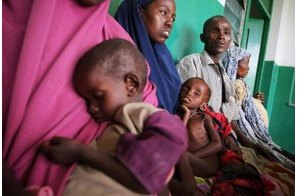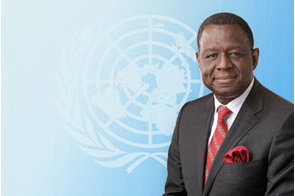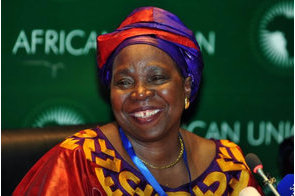World Bank launches first-ever insurance and pandemic bonds

Summary
The PEF includes an insurance window, which combines funding from the reinsurance markets with the proceeds of World Bank-issued pandemic.
The World Bank Group on May 21th, launched the Pandemic Emergency Financing Facility (PEF), an innovative, fast-disbursing global financing mechanism designed to protect the world against deadly pandemics. The PEF will create the first-ever insurance market for pandemic risk. Japan, which holds the G7 Presidency, committed the first $50 million in funding toward the new initiative.
“Pandemics pose some of the biggest threats in the world to people's lives and to economies, and for the first time we will have a system that can move funding and teams of experts to the sites of outbreaks before they spin out of control,” said Jim Yong Kim, President of the World Bank Group. “This facility addresses a long, collective failure in dealing with pandemics. The Ebola crisis in Guinea, Liberia and Sierra Leone taught all of us that we must be much more vigilant to outbreaks and respond immediately to save lives and also to protect economic growth.”
The announcement came ahead of the May 26-27 Summit of Group of Seven Leaders in Ise-Shima, Japan. G7 leaders had urged the World Bank Group to develop the initiative during their May 2015 summit in Schloss-Elmau, Germany.
“Japan is proud to support the Pandemic Emergency Financing Facility, which prevents pandemics from undermining important development achievements",” said Deputy Prime Minister and Minister of Finance of Japan Taro Aso.
The new facility will accelerate both global and national responses to future outbreaks with pandemic potential. It was built and designed in collaboration with the World Health Organization and the private sector, introducing a new level of rigour into both the financing and the response.
The PEF includes an insurance window, which combines funding from the reinsurance markets with the proceeds of World Bank-issued pandemic (catastrophe, or Cat) bonds, as well as a complementary cash window. This will be the first time World Bank Cat Bonds have been used to combat infectious diseases. In the event of an outbreak, the PEF will release funds quickly to countries and qualified international responding agencies.
The insurance window will provide coverage up to $500 million for an initial period of three years for outbreaks of infectious diseases most likely to cause major epidemics, including new Orthomyxoviruses (e.g. new influenza pandemic virus A, B and C), Coronaviridae (e.g. SARS, MERS), Filoviridae (e.g. Ebola, Marburg) and other zoonotic diseases (e.g. Crimean Congo, Rift Valley, Lassa fever). Parametric triggers designed with publicly available data will determine when the money would be released, based on the size, severity and spread of the outbreak.
The complementary cash window will provide more flexible funding to address a larger set of emerging pathogens, which may not yet meet the activation criteria for the insurance window.
All 77 countries eligible for financing from the International Development Association, the World Bank Group's fund for the poorest countries, will be eligible to receive coverage from the PEF. The PEF is expected to be operational later this year.
Recent economic analysis suggests that the annual global cost of moderately severe to severe pandemics is roughly $570 billion, or 0.7 percent of global GDP. A very severe pandemic like the 1918 Spanish flu could cost as much as 5 percent of global GDP, or nearly $4 trillion.
During the past two years alone, pandemic threats have included the devastating Ebola crisis in West Africa – which crippled the economies of Guinea, Liberia and Sierra Leone, and cost them an estimated $2.8 billion in GDP losses ($600 million in Guinea, $300 million in Liberia and $1.9 billion in Sierra Leone); the MERS outbreak, which took a toll on the South Korean economy; and the Zika virus that is spreading in the Americas and putting thousands of unborn children at risk.
Four global expert panels that were convened over the past year in the wake of the Ebola crisis concluded that the world must urgently step up its capacity for a swift response to outbreaks before they become more deadly and costly pandemics.
The World Bank Group estimates that if the PEF had existed in mid-2014 as the Ebola outbreak was spreading rapidly in West Africa, it could have mobilized an initial $100 million as early as July to severely limit the spread and severity of the epidemic. Instead, money at that scale did not begin to flow until three months later. During that three month period, the number of Ebola cases increased tenfold. The Ebola epidemic has claimed more than 11,300 lives and cost at least $10 billion to date. International assistance has totalled more than $7 billion for Ebola response and recovery.
Related
-
U.S. think tank debunks WHO reports on environmental causes of child mortality
The report says market-driven economic growth, not “sustainable growth,” is key to improving public health.
-
Maternal mortality declined 44% in 25years
Maternal deaths have fallen from about 532,000 in 1990 to an estimated 303,000 this year.
-
African leaders make ‘historic’ endorsement of universal access to immunization
The Addis Declaration on Immunization calls for increased political and financial investments in immunization programmes.









